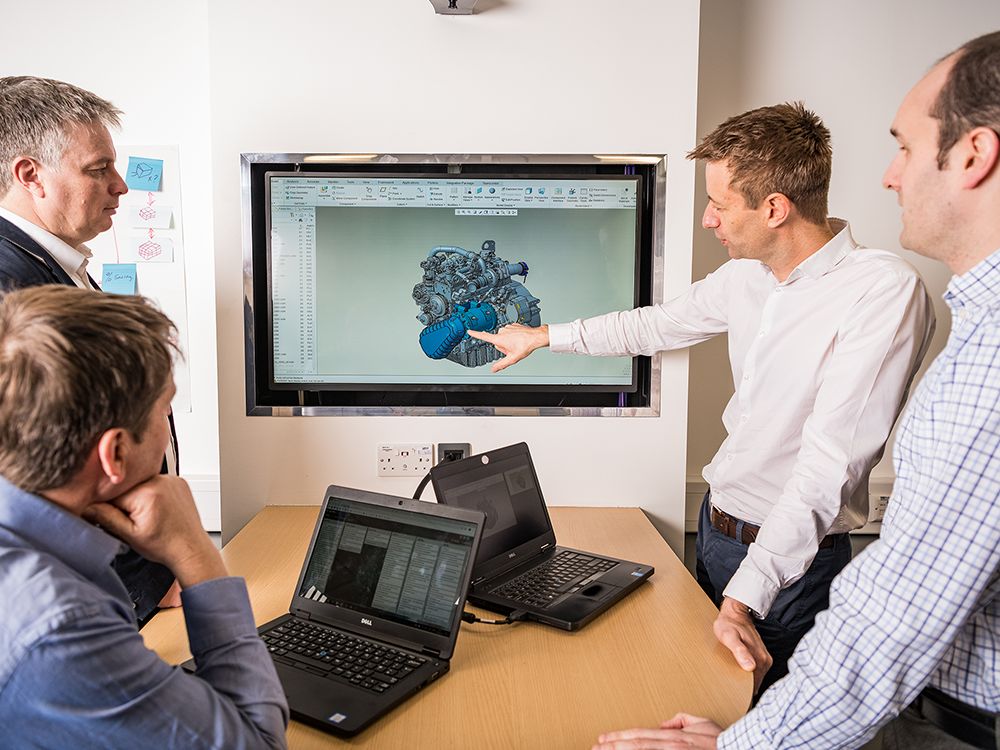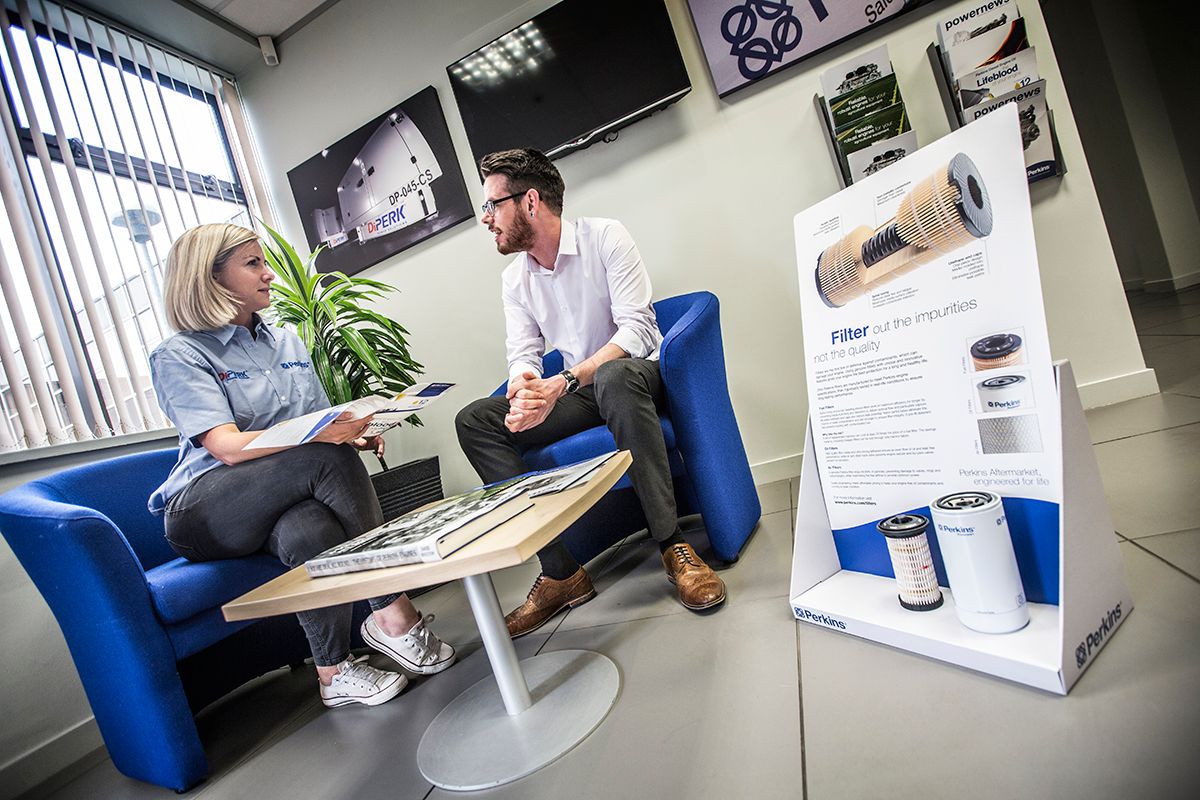Hybrid and electric power systems are gaining traction with agricultural machine manufacturers as they develop the next generation of farm machines. After a decade of development, Perkins has a range of technologies that can reduce your machines’ running costs and emissions – and support your commercial success.
With hybrid and electric power solutions having made significant improvements over the last few years, the time is rapidly approaching where the agricultural industry may be able to adopt some of those technologies to help lower running costs and reduce emissions even further.
Over the last decade, Perkins has made significant investments in hybrid and electrification research and has recently released a range of technologies that can add real value to agricultural original equipment manufacturers (OEMs) as they develop the machines of tomorrow.
This range include a variety of hybrid-electric, hybrid-mechanical and hybrid-hydraulic systems - which complement the existing Perkins 0.5-18 litre range of diesel engines.
Through its hybrid technologies, Perkins is able to demonstrate significant benefits to both OEMs and end-users.
An example of this is our 75 kW power solution, which uses a 55 kW diesel engine and a 20 kW power boost from the hybrid technology. This offers a unique opportunity for OEMs to remove the selective catalytic reduction (SCR) and diesel exhaust fluid (DEF) system from their machine, helping to reduce both the installation cost as well as eliminating the requirement to add a second fluid. With OEMs looking to improve the customer experience, without compromising performance, hybrid technologies are an extremely attractive solution.
Perkins hybrid technologies can also recover excess machine energy during deceleration – when required, providing this energy back to the machine. This innovative solution helps to reduce fuel consumption and improve total cost of ownership.
“Whereas most hybrid systems require the OEM to undergo significant machine re-design, the hybrid recovery and storage takes place within the engine system, helping OEMs to deliver a simple to integrate system” said Perkins product marketing manager Ajay Prasher.
So, with several options and opportunities out there, where should agricultural OEMs be focusing their attention to gain the most commercial benefit?
“What’s clear is that the right technology solution will vary considerably depending on the specific machine and how it’s used,” said Perkins general sales manager – global OEM sales James Reed.
“Large agricultural machines, such as tractors, can pose unique challenges due to their high-power demand and high fuel burn. But beyond tractors, there are lots of opportunities to benefit, particularly farm equipment that spends a lot of time at idle or on shut down, such as telehandlers or loaders.”
James added: “Furthermore, there are many other opportunities with these technologies, and these can apply to tractors and all types of equipment used on the farm and beyond. For example, with the right integration, machine systems can benefit from the hybrid architecture and control systems, such as electric cooling, braking and HVAC systems (heating, ventilation and air conditioning), realising further benefits in overall efficiency.”
Hybrid technologies are not new to Perkins; research and development in this field has been a sustained focus for more than 10 years.
“With interest growing in hybrids, we’ve established a dedicated team, who are developing these systems – we’ve invested significantly in our tools, analytical capability and test facilities to ensure we deliver the best solutions possible,” said Ajay.
As part of its hybrid development journey, Perkins has worked closely with a number of OEMs to understand their performance requirements, such as acceleration and braking. As a result, Perkins engineers have been able to design the hybrid systems to deliver maximum responsiveness whilst recovering the maximum amount of energy.
“Through our analytical tools and close relationships with our OEMs, we can help them identify and optimise the right hybrid system for their unique set of requirements,” Ajay added.
For more information on Perkins hybrid and electric technologies, download the white paper at www.perkins.com/hybrids
Hybrid-electric: This incorporates an electric machine and battery within the engine system. As the machine brakes, the electric system can recover the energy and store it within the battery. When required, the battery can then supply energy back into the engine via a motor to provide additional power.
Hybrid-mechanical: As the machine brakes, the system mechanically stores the energy. When required, the system can then supply energy back into the engine via a clutch mechanism to provide additional power.
Hybrid-hydraulic: This incorporates a hydraulic pump and pressure accumulator within the engine system. As the machine brakes, this pump can recover the energy and store it within the accumulator. When required, the accumulator can then supply energy back into the engine via the pump to provide additional power.
Perkins range of emissions technology allows you to find the right solution, every time in every market.
Learn MoreAsk any of our 800+ original equipment manufacturers (OEM) customers worldwide what they enjoy most about their collaboration with Perkins and they’ll tell you about the no-fuss, meticulous approach that is our hallmark.
Learn MoreBy working with Perkins, you can ensure you meet all your requirements, while keeping your engineering managers, compliance teams and accountants happy.
Learn MoreHundreds of thousands, even millions of farmers rely on a tractor powered by Perkins.
Learn MoreWe create and deliver appropriate power solutions which perfectly match the operational needs of original equipment manufacturers (OEMs).
Learn MoreThere are many reasons why manufacturers choose Perkins to power their products.
Learn MoreUsing Technology Integration Workshop to bring together the right expertise.
Learn MoreYour regional Perkins Distributor can provide local, on-the-ground engine support.
Learn MoreOur digital magazine with the latest news, interviews and analysis.
Read moreIf you're ready to receive trusted advice from a Perkins expert, speak to our team today.
Connect with us










